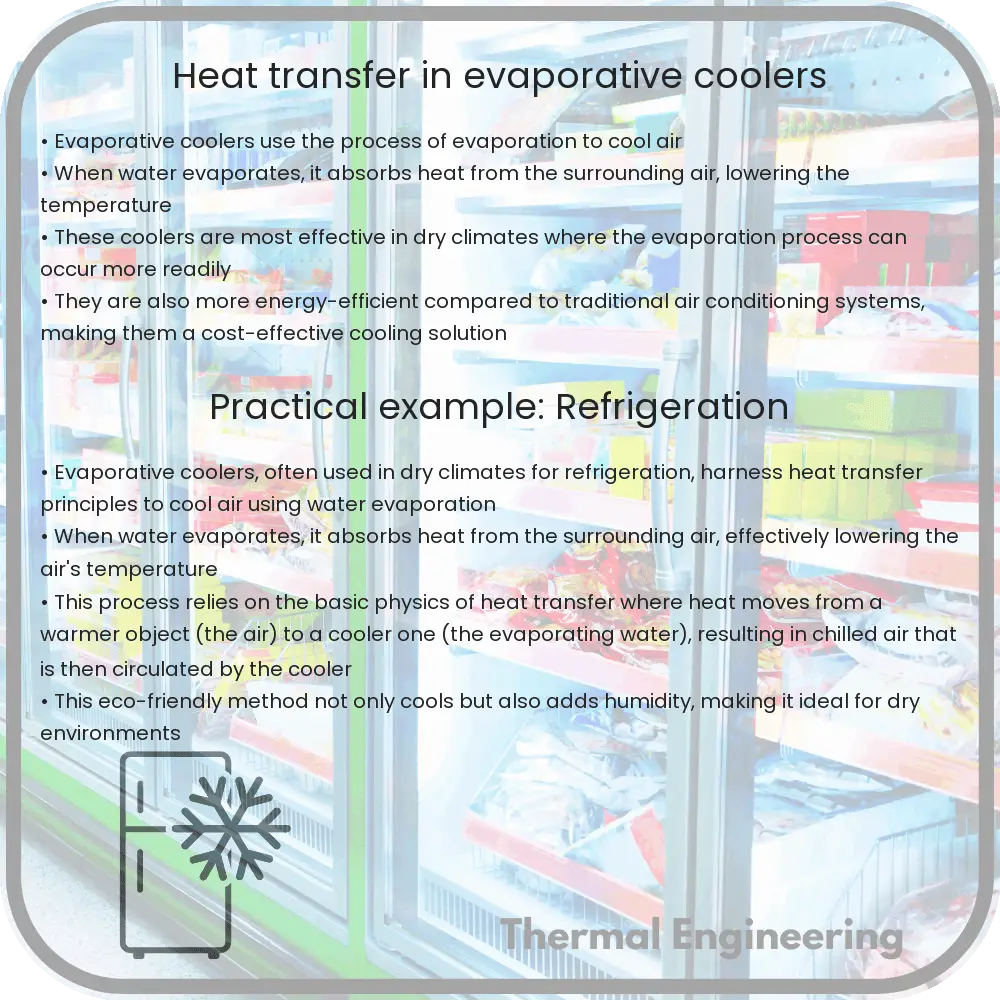Learn about heat transfer in evaporative coolers, focusing on convection, conduction, and evaporation processes that aid in cooling.

Understanding Heat Transfer in Evaporative Coolers
Evaporative coolers, also known as swamp coolers, offer an energy-efficient way to cool spaces, particularly in hot, dry climates. This method of cooling is based fundamentally on the principles of heat transfer and the process of evaporation. In this article, we will explore the science behind evaporative cooling, focusing on how heat transfer occurs in these systems.
The Basics of Evaporative Cooling
First, it’s important to understand what evaporative cooling is. It’s a natural process that occurs all around us. For instance, when you step out of a swimming pool on a hot day, you feel cool as the water on your skin evaporates. Evaporative coolers utilize this same principle by combining water evaporation with a simple fan system to lower the temperature of the air.
Key Components
An evaporative cooler primarily consists of:
- A fan
- A water pump
- Water-soaked pads
The cooler draws in the warm external air through these wet pads and by passing this air over them, it cools down through evaporation.
Heat Transfer Mechanisms in Evaporative Coolers
Understanding the heat transfer in evaporative coolers involves examining three key modes:
- Convection
- Conduction
- Evaporation
Convection
In evaporative coolers, the pump circulates water from the reservoir to the pads, keeping them saturated. As the hot air outside the unit is pulled in by the fan, it passes over these cool, damp pads. The heat from the air transfers to the cooler water through convection, the process of heat transfer by the movement of fluids (in this case, air over the water surface).
Conduction
Conduction is the process of heat transfer through direct contact. In an evaporative cooler, when the warmer external air directly touches the cooler surface of the wet pads, the air’s heat is transferred to the water. This causes the water to gain energy and increase in temperature slightly, thereby reducing the temperature of the air.
Evaporation
The most significant part of the cooling process in evaporative coolers is evaporation. When the warm air hits the cooler, wet pads, the water molecules at the surface of the water gain enough energy to change into vapor. The phase change from liquid water to water vapor requires energy, which comes from the heat in the air. This heat transfer from the air to the water vapor lowers the air’s temperature, a process termed evaporative cooling.
Efficiency Factors
The efficiency of evaporative coolers can depend on several factors, including:
- Humidity levels: Lower humidity allows for more effective evaporation.
- Airflow rate: Higher airflow rates increase evaporation, enhancing the cooling effect.
- Pad material and thickness: More absorbent and thicker pads enhance evaporation.
In essence, understanding how heat transfer via convection, conduction, and evaporation is crucial in optimizing the design and function of evaporative coolers. These coolers not only offer a cost-effective cooling solution but also utilize a more natural and environmentally friendly process compared to conventional air-conditioning systems.
For regions that experience high temperatures combined with low humidity, evaporative coolers provide a sustainable option to maintain comfort without relying heavily on energy-intensive technologies.